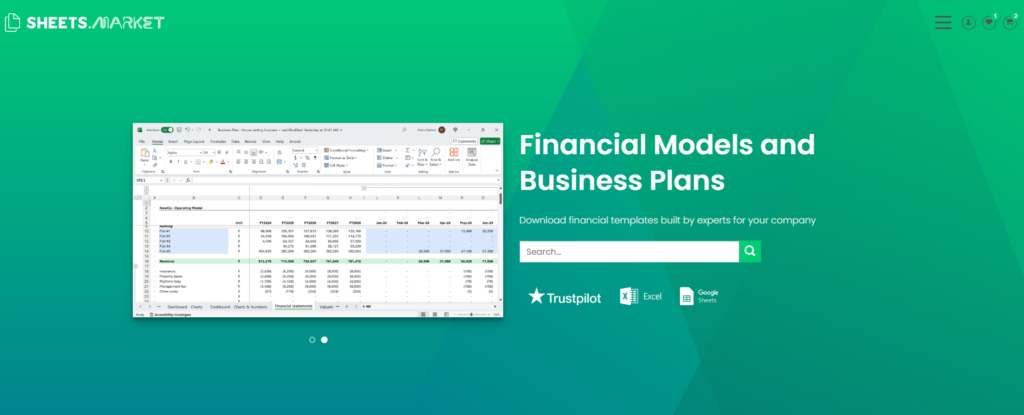Business Planning & Strategy, Financial Models
Veterinary Clinic Business: Costs, Revenue Potential & Profitability
Veterinary clinics sit at the intersection of healthcare, recurring pet care, and emotional consumer spending. While demand is inelastic and rising, driven by pet ownership growth and humanization of animals, profitability is often undermined by labor inefficiencies, underpriced services, and poor capacity utilization. Sustainable performance requires a tightly managed clinical model, diversified service tiers, and a data-driven approach to client retention and case throughput.
Asset Configuration
CapEx is significant due to medical infrastructure requirements and regulatory compliance. A typical general-practice clinic includes 2–3 exam rooms, surgical suite, treatment area, reception, pharmacy, and back-office space. Required space: 1,500–3,000 sq. ft.
| Asset Category | Cost Range (USD) | Notes |
|---|---|---|
| Medical Equipment | $150,000 – $250,000 | X-ray, ultrasound, anesthesia, autoclave, surgical tables |
| Build-Out (Rooms + HVAC) | $100,000 – $200,000 | Flooring, plumbing, walls, oxygen lines, lighting |
| Furniture & Admin Systems | $20,000 – $40,000 | Reception, office, POS, signage |
| IT & Practice Management SW | $10,000 – $20,000 | EMR, scheduling, billing, client communications |
| Inventory & Initial Supplies | $25,000 – $40,000 | Medications, vaccines, surgical tools, consumables |
Total CapEx: $305,000 – $550,000 for a 2–3 exam room setup, excluding real estate. Leasing medical-ready space or partnering with consolidators can reduce upfront investment.
Revenue Model
Revenue is service-based and split across consultations, diagnostics, surgeries, medications, and preventive care (e.g., vaccinations, flea/tick control). General-practice clinics typically charge $60–$90 per consultation. Spay/neuter surgeries, dental cleanings, and minor soft tissue surgeries are core profit centers.
Recurring revenue from wellness plans ($30–$70/month) improves cash flow and retention. Complementary retail (food, supplements) and diagnostic upsells (bloodwork, imaging) significantly raise average ticket size.
Annual Revenue Potential – 2-Doctor Suburban Clinic
| Revenue Stream | Volume Assumption | Annual Revenue (USD) |
|---|---|---|
| Consultations | 4,500/year @ $75 avg. | $337,500 |
| Diagnostics & Imaging | $100 avg. on 60% of visits | $270,000 |
| Surgeries & Dental | 400 cases/year @ $600 avg. | $240,000 |
| Medications & Vaccines | Avg. $80 per visit | $360,000 |
| Wellness Plans (Recurring) | 200 plans @ $50/month | $120,000 |
| Retail (Food/Supplements) | $1,000/week avg. | $52,000 |
| Total | $1,379,500 |
Top clinics exceed $1.5M/year with two vets and high diagnostic/surgical case loads. Clinics focused solely on consultations and vaccines often plateau at $600K–$800K.
Operating Costs
Labor is the largest expense, followed by medical supplies, rent, and pharmacy cost of goods sold (COGS). Clinics typically operate with 1–2 veterinarians, 2–3 vet techs, and 1–2 front-office staff.
| Cost Category | Annual Cost (USD) |
|---|---|
| Salaries & Wages (All Staff) | $480,000 – $620,000 |
| Medical Supplies & COGS | $200,000 – $275,000 |
| Rent & Utilities | $110,000 – $135,000 |
| Marketing & Outreach | $40,000 – $70,000 |
| Insurance & Compliance | $30,000 – $50,000 |
| Software & IT | $25,000 |
| Total | $885,000 – $1,175,000 |
Clinics with disciplined operations achieve 30–35% EBITDA margins. Poor scheduling, weak inventory management, and underutilized diagnostics push margin below 15%.
Profitability Strategies
Revenue per appointment and doctor utilization rate are core KPIs. A high-performing clinic targets revenue per appointment > $250 and DVM productivity of 3–4 patients/hour. Structured scheduling, balancing wellness and procedure blocks, is critical to avoid bottlenecks and underbilling.
Bundling services into preventive care plans improves ARPU and client retention while reducing appointment frequency strain. Diagnostic protocolization (e.g., automatic CBC + chem panel for senior pets) standardizes care and increases compliance.
Front-desk upselling (e.g. nutraceuticals, grooming referrals, additional vaccines) can add $10–$20 per client at >70% gross margin. Offering in-house or third-party financing increases surgical conversion rates.
On the cost side, using vet techs for routine tasks (blood draws, vaccine prep, post-op monitoring) reduces DVM labor cost per case. Inventory control, just-in-time ordering, and formulary restrictions prevent overstocking and shrinkage.
So what?
A veterinary clinic is not a healthcare charity but rather a highly structured, medically licensed service business. Profitability depends on clinical efficiency, case monetization, and loyalty-driven recurring revenue. Operators who treat the practice as a business with protocols, upselling, and retention systems can achieve >25% EBITDA margins with <$600K CapEx. Strategic execution transforms a vet clinic from a lifestyle practice into a durable, cash-generating medical enterprise.

Are you considering opening your Veterinary Clinic business? Download the comprehensive Veterinary Clinic Financial Model Template from SHEETS.MARKET to simplify your financial planning. This tool will help you forecast costs, revenue, and potential profits, making securing funding and planning for success for your Veterinary Clinic business easier.



